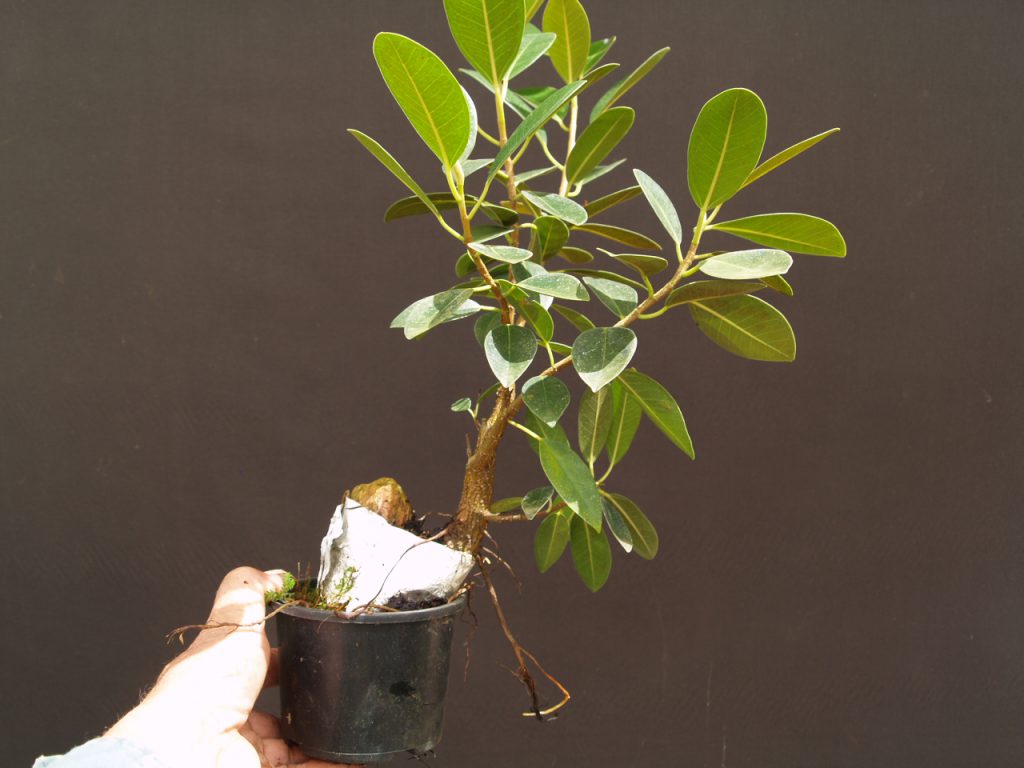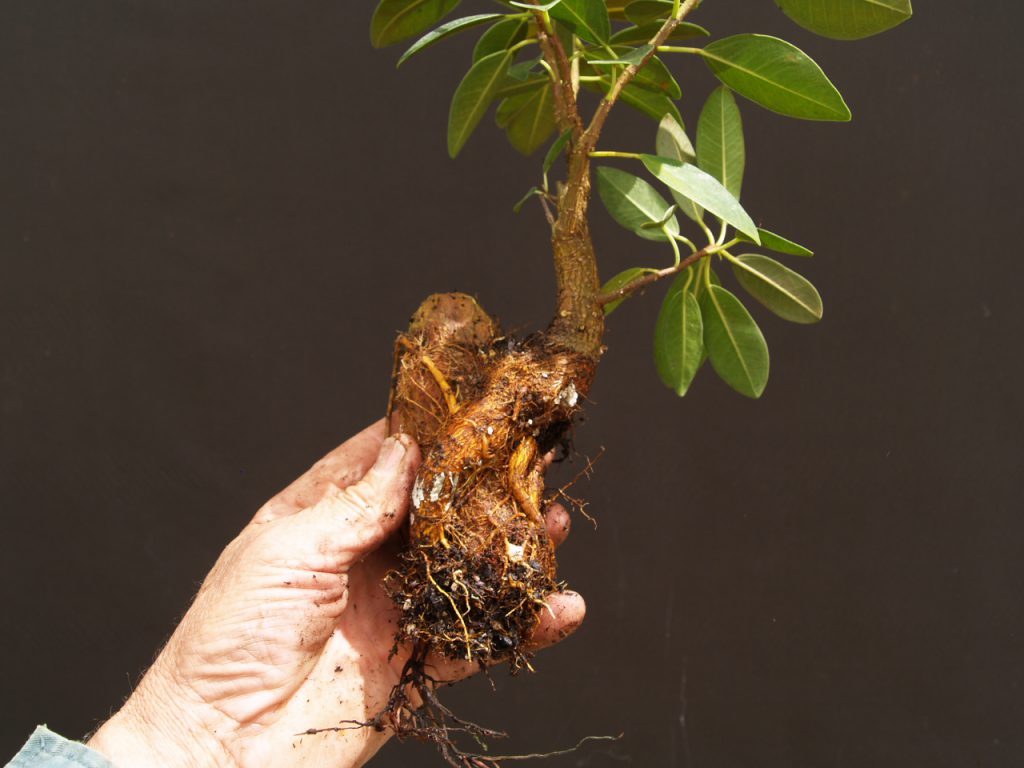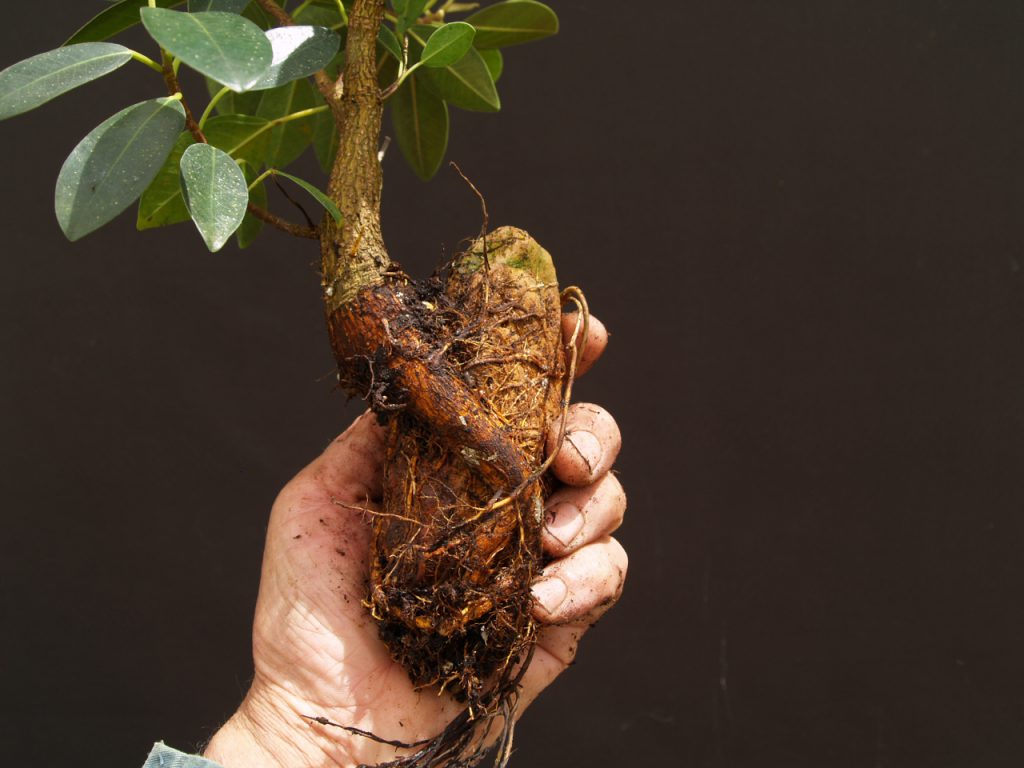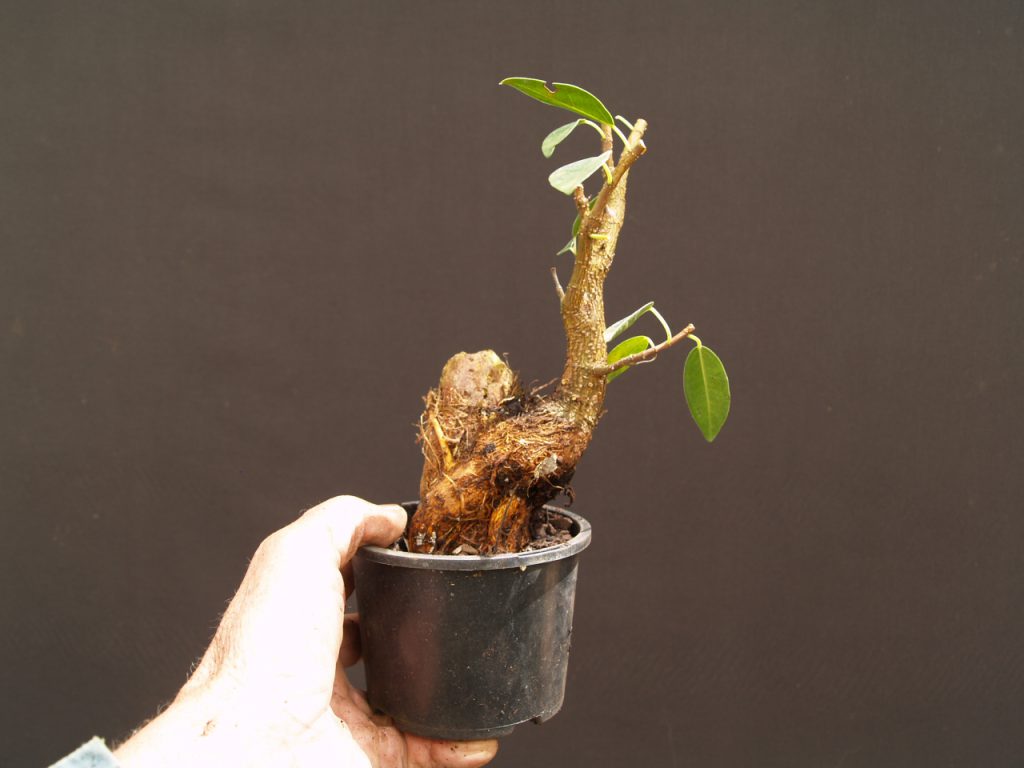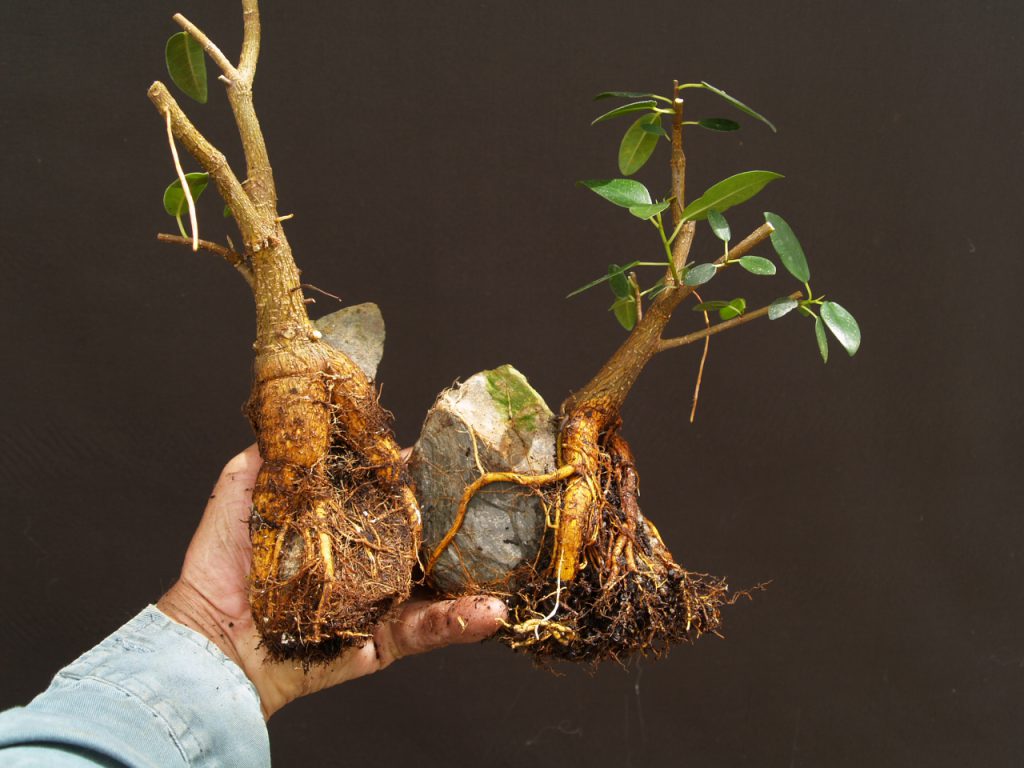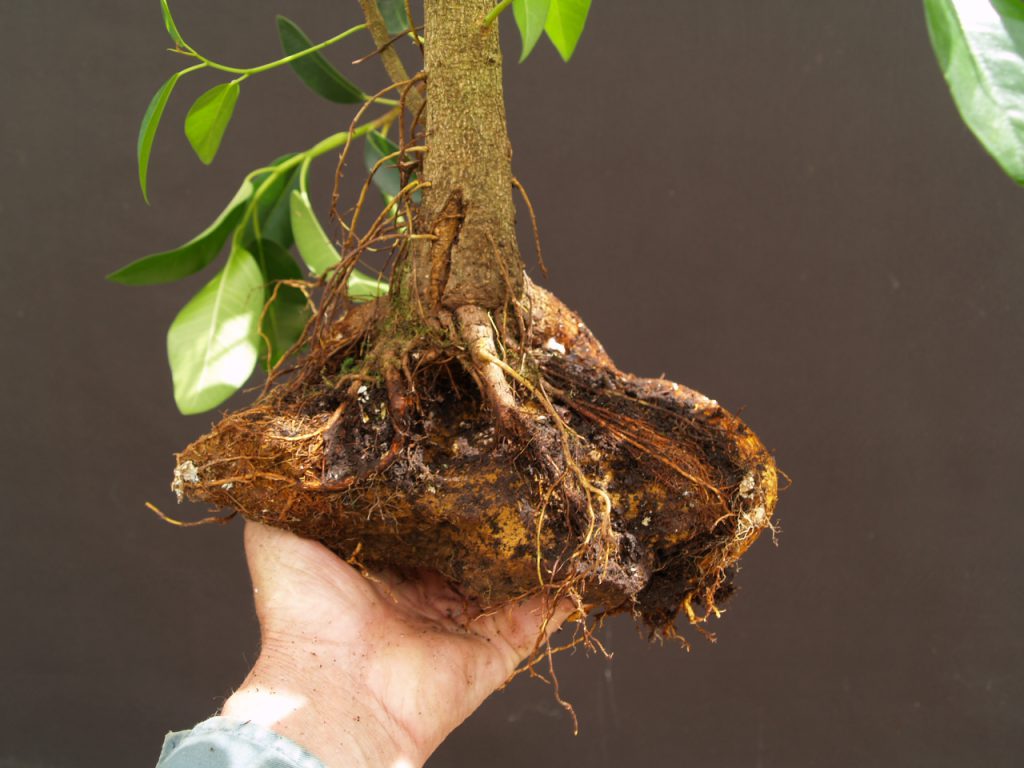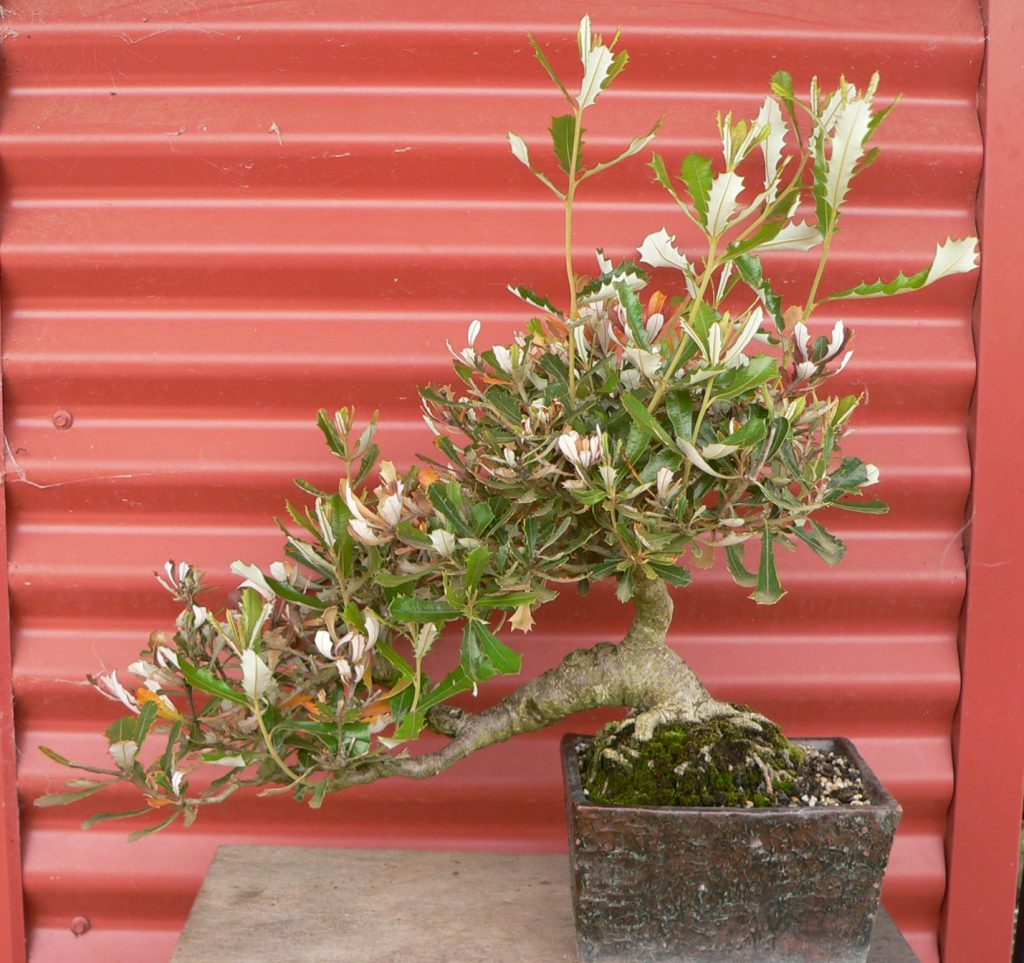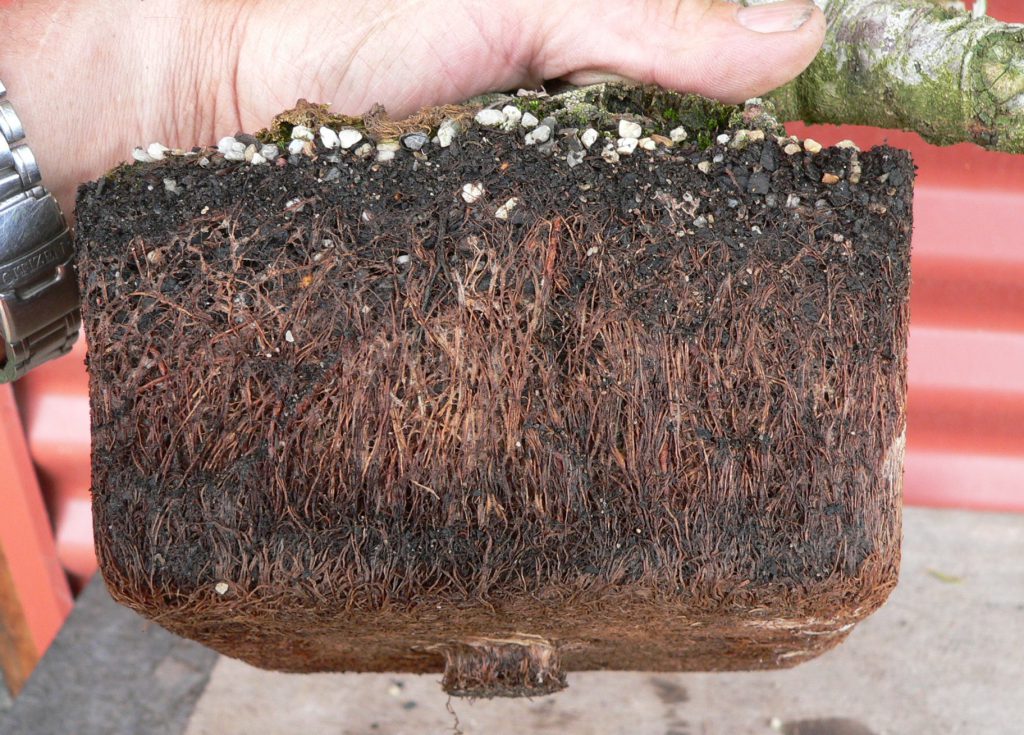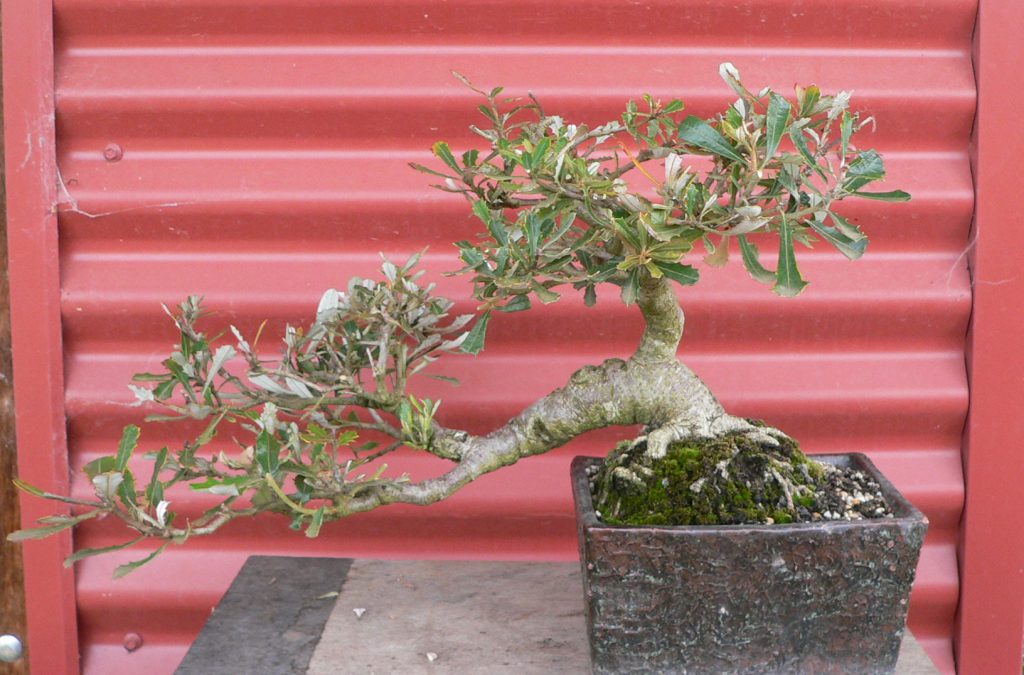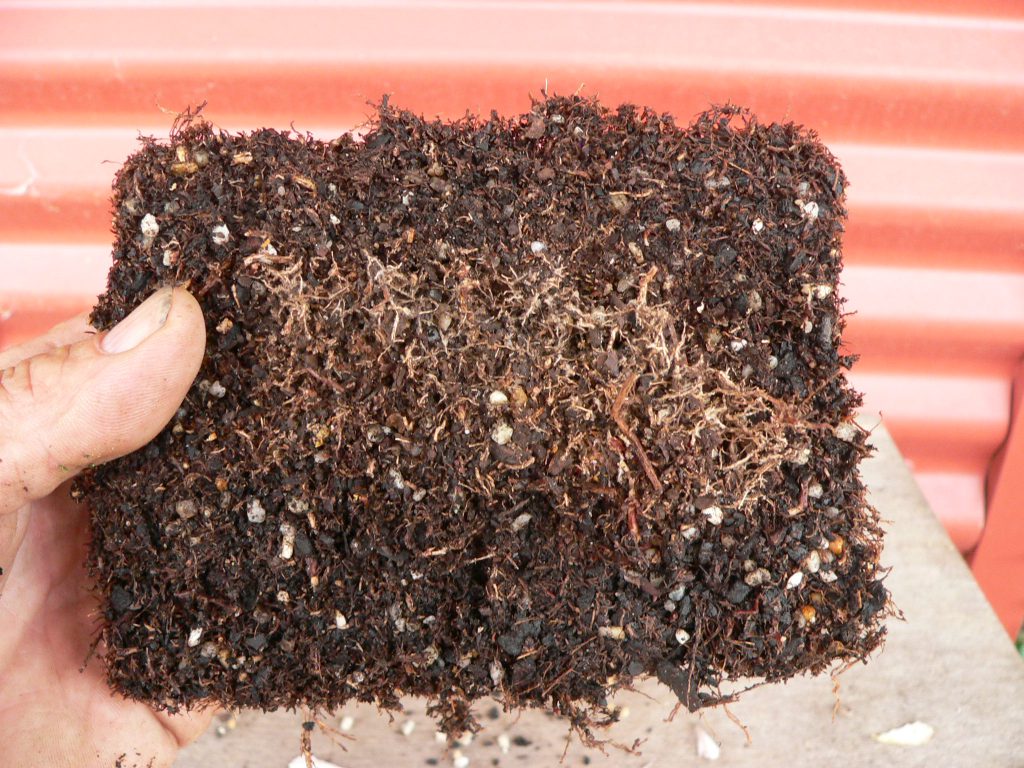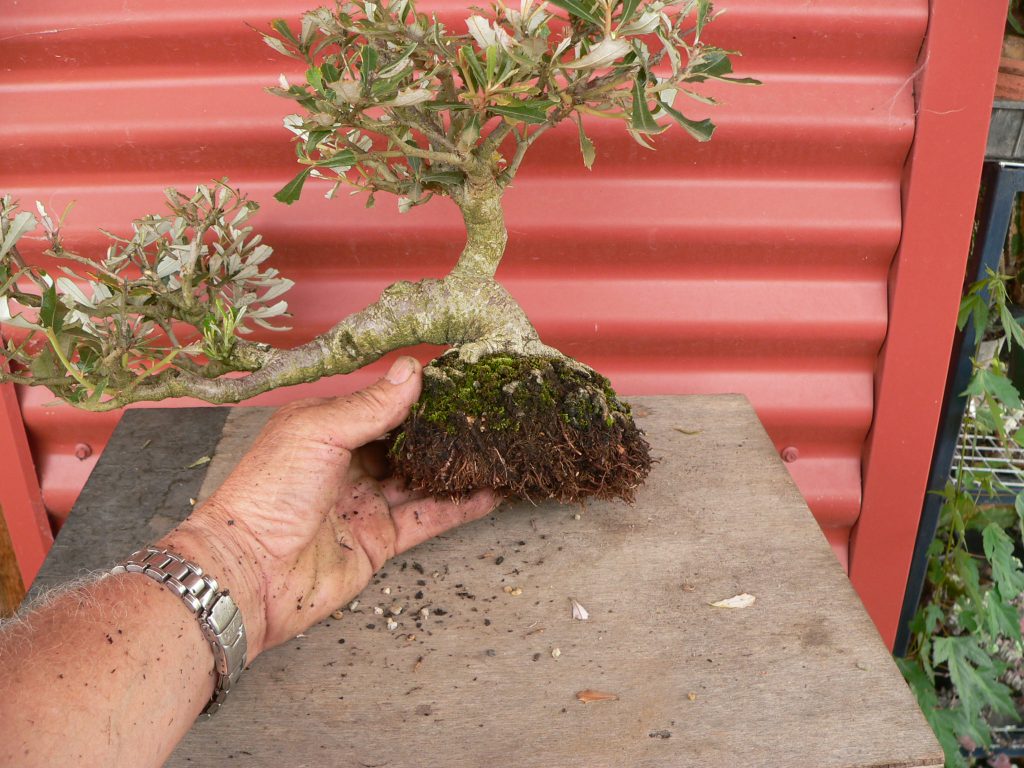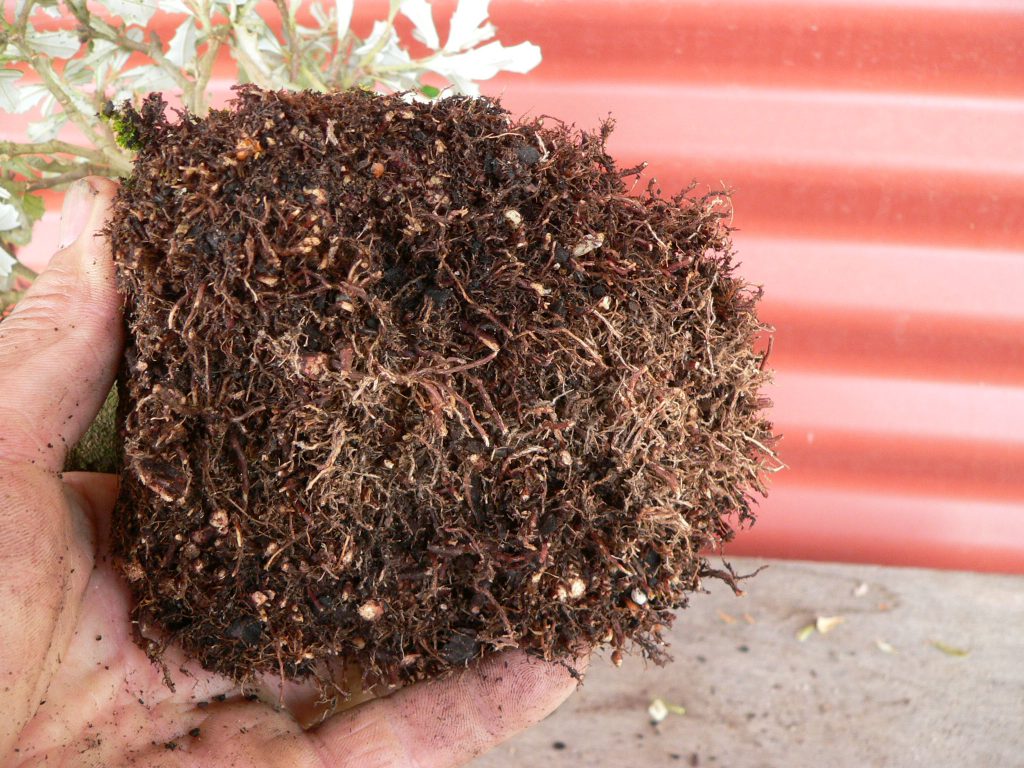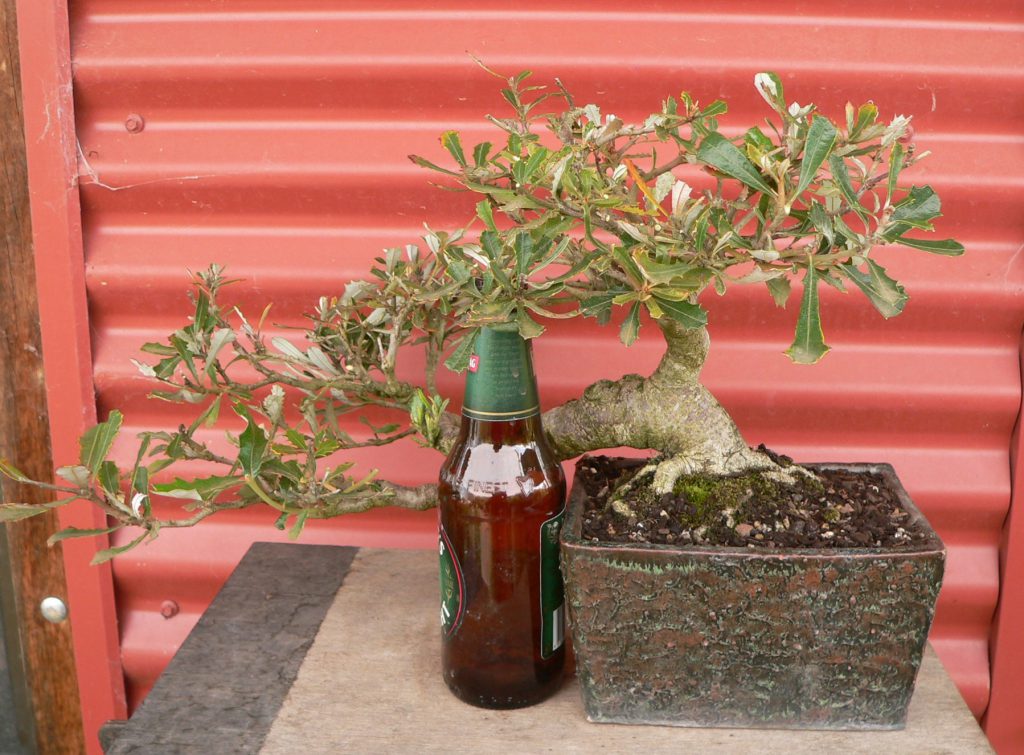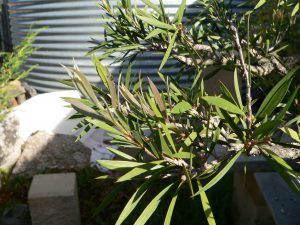Summer is a great time to work on ficus and other sub tropical plants. They respond quickly and recover far better if pruned or root pruned while they are still actively growing.
This old ficus has been posted before. It is now a bit too large for me to manage comfortably so I’ve offered it for sale. Earlier in spring I gave this one a really hard trim as trimming had been neglected for a year or 2 and branches were becoming too long.
The tree has responded with masses of new shoots, some from the existing branches and more from the trunk. Now it is time to select best new shoots, thin out excess shoots and trim the good ones.
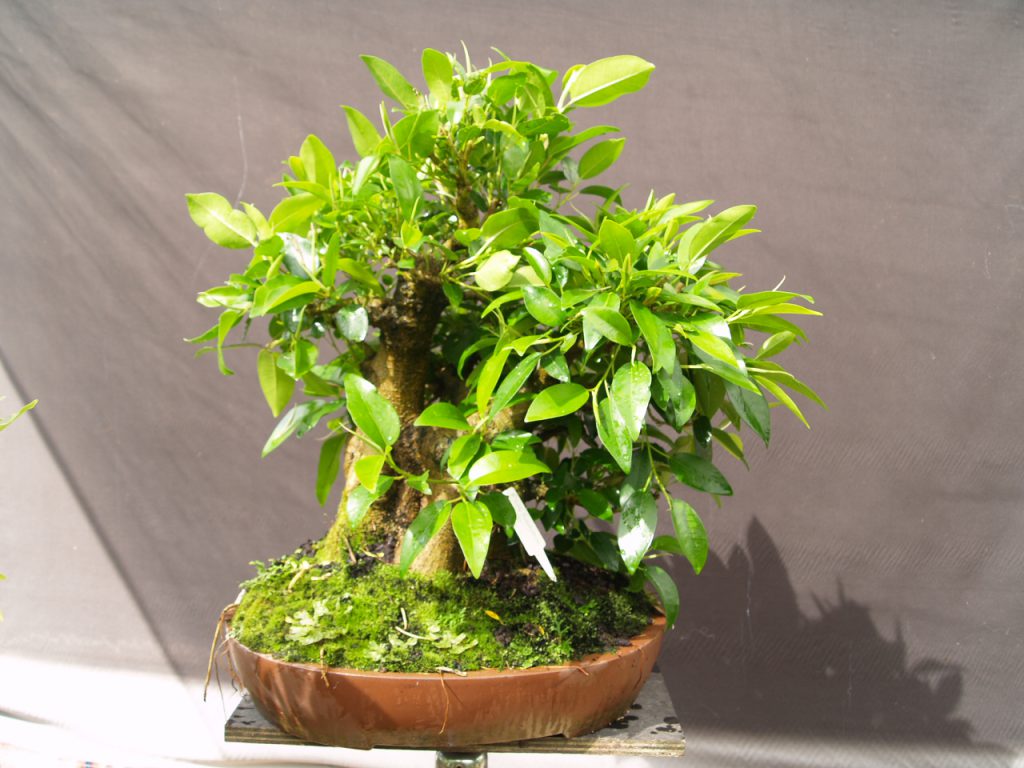
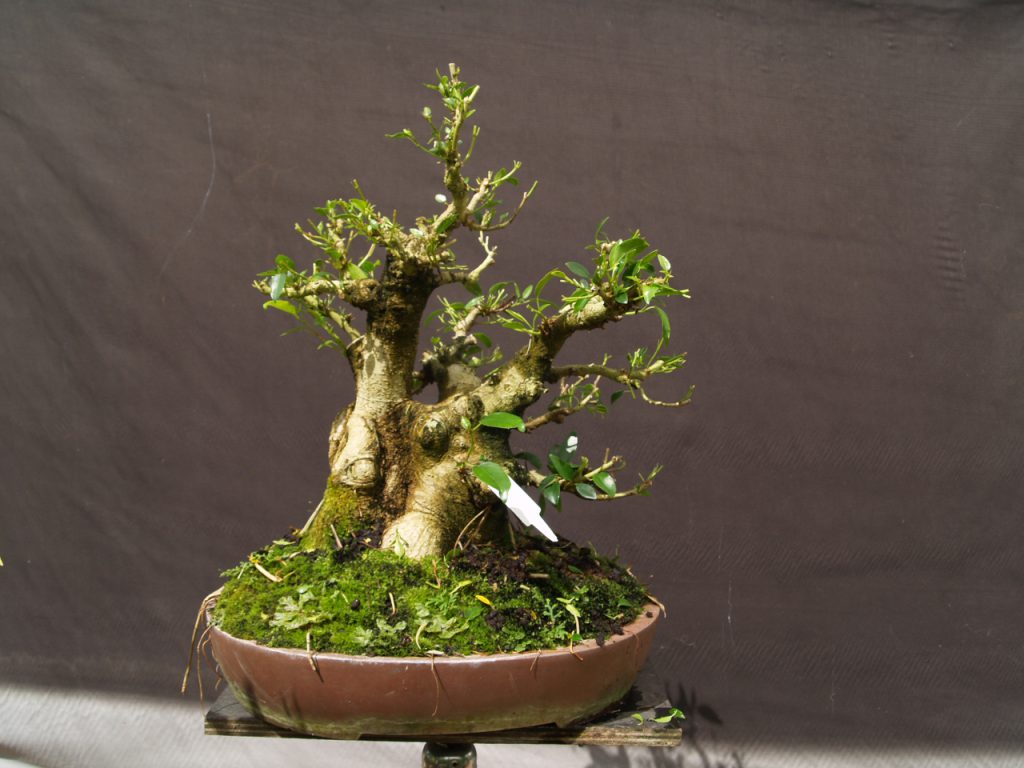
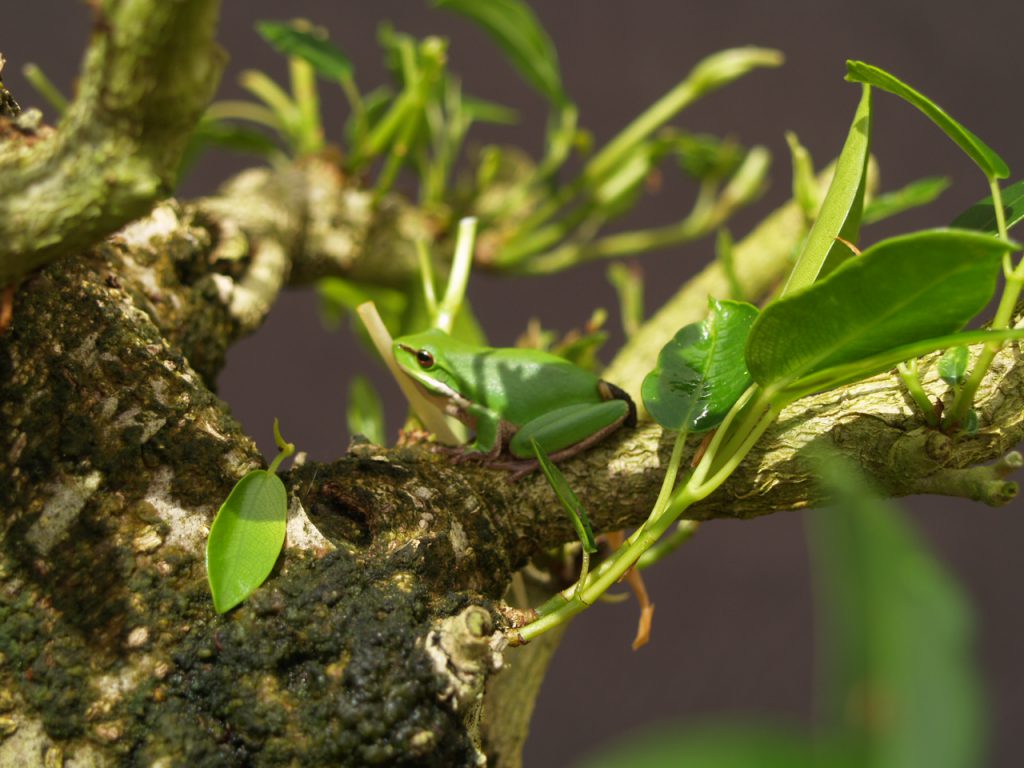
The dwarf green tree frog was not impressed that I removed all his cover but stayed put while I worked. Now safely back in the poly house.
The above tree (with or without the frog) is still available if you fancy owning an old, impressive trunk bonsai. Still priced at $3,300
For those who would rather invest some time instead of money Shibui Bonsai also has smaller starter Port Jackson figs. In just 30 years you could have something like the tree above for an investment of just $15 or $20.
I also repotted some starter root over rock ficus to check the roots. These trees were started just last year which shows how quickly ficus can grow.
